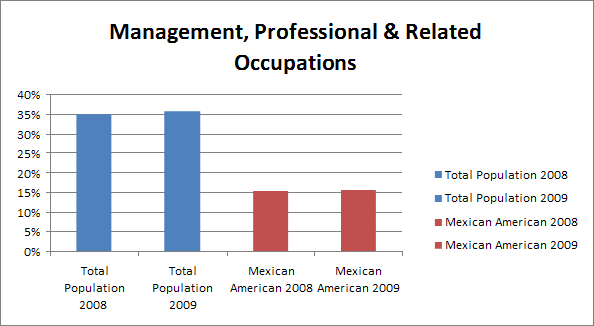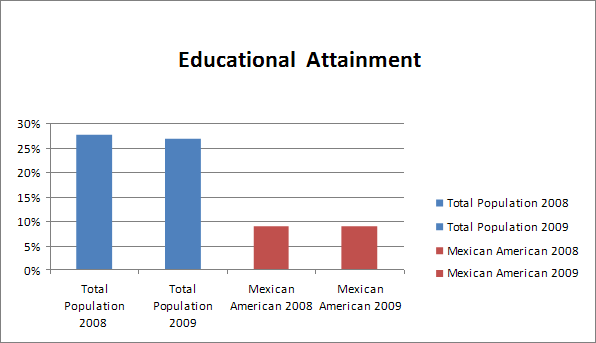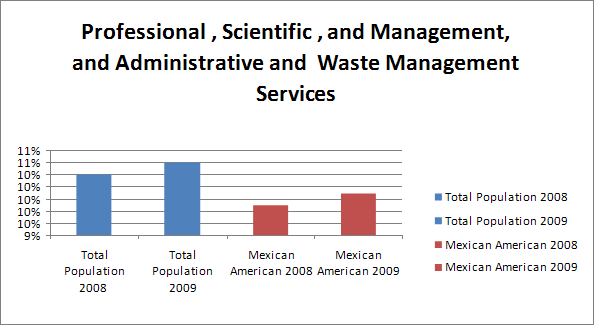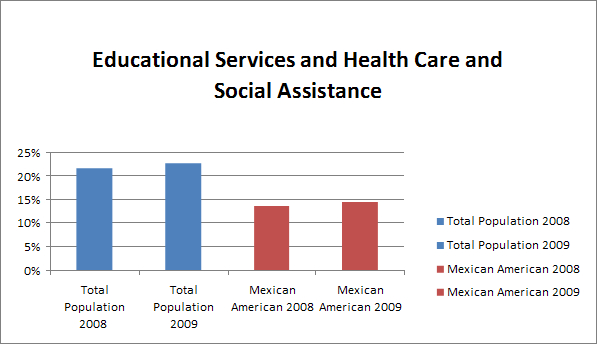Overview
North American Free Trade Agreement (NAFTA) creates special economic and trade relationships for the United States (U.S.), Canada and Mexico. The nonimmigrant NAFTA Professional (TN) visa allows citizens of Canada and Mexico, as NAFTA professionals, to work in the U.S. in a prearranged business activity for a U.S. or foreign employer. Permanent residents, including Canadian permanent residents, are not able to apply to work as a NAFTA professional.
How Can Professionals from Mexico and Canada Work in the U.S.?
Professionals of Canada or Mexico may work in the U.S. under the following conditions:
* Applicant is a citizen of Canada or Mexico;
* Profession is on the NAFTA list;
* Position in the U.S. requires a NAFTA professional;
* Mexican or Canadian applicant is to work in a prearranged full-time or part-time job, for a U.S. employer (see documentation required). Self employment is not permitted;
* Professional Canadian or Mexican citizen has the qualifications of the profession.
Note: The application requirements for citizens of Canada and Mexico, shown below are different.
Requirements for Canadian Citizens
Canadian citizens usually do not need a visa as a NAFTA Professional, although a visa can be issued to qualified TN visa applicants upon request. A Canadian citizen without a TN visa can apply at a U.S. port of entry. Learn about requirements and more on the U.S. Customs and Border Protection (CBP) website and U.S. Citizenship and Immigration Services (USCIS) website. Canadian citizens can also review information regarding TN visas through U.S. Embassy Ottawa’s website.
When Does a Canadian NAFTA Professional Need a Visa? A Canadian residing in another country with a non-Canadian spouse and child would need a visa to enable the spouse and child to be able to apply for a visa to accompany or join the NAFTA Professional, as a TD visa holder. Canadians applying for a visa will follow the same documentation requirements as shown in the sections Mexican Citizens, Applying for a TN Visa, and Required Documentation.
Requirements for Mexican Citizens
Mexican citizens require a visa to request admission to the U.S. (A USCIS approved petition is not required.)
Applying for a TN Visa
NAFTA applicants must meet specific requirements to qualify for a NAFTA Professional Worker (TN) visa under immigration law. The consular officer will determine whether you qualify for the visa. Applicants may apply at consular sections around the world for a NAFTA professional (TN) visa. As part of the visa application process, an interview at the U.S. Embassy or Consulate is required for visa applicants from age 14 to 79, with few exceptions. Persons age 13 and younger, and age 80 and older, generally do not require an interview, unless requested by the U.S. Embassy or Consulate. Making your appointment for an interview is the first step in the visa application process. The waiting time for an interview appointment for applicants can vary, so early visa application is strongly encouraged. Visa wait times for interview appointments and visa processing time information for each U.S. Embassy or Consulate worldwide is available on our website at Visa Wait Times, and on most U.S. Embassy or Consulate websites. Visit the U.S. Embassy or Consulate website where you will apply for your visa to find out how to schedule an interview appointment, pay the fees and any other instructions.
During the visa application process, usually at the interview, an ink-free digital fingerprint scan will be quickly taken. Some visa applications require further administrative processing, which takes additional time after the visa applicant’s interview by a Consular Officer.
Required Documentation
Each applicant for a TN visa must adhere to the procedure as explained below:
* Online Nonimmigrant Visa Electronic Application, Form DS-160. Visit our DS-160 webpage to learn more about the DS-160 online process.
* A passport valid for travel to the U.S. and with a validity date at least six months beyond the applicant’s intended period of stay in the U.S. (unless country-specific agreements provide exemptions).
* One (1) 2×2 photograph. See the required photo format explained in Nonimmigrant Photograph Requirements. A photograph is not required if you are applying in Mexico.
* Letter of Employment in the U.S. Additionally, the applicant’s employer in the U.S. must provide an employment letter that includes the following:
o The letter must indicate that the position in question in the U.S. requires the employment of a person in a professional capacity, consistent with the NAFTA Chapter 16, Annex 1603, Appendix 1603.d.1.
o The applicant must present evidence of professional employment to satisfy the Consular Officer of your plans to be employed in prearranged business activities for a U.S. employer(s) or entity(ies) at a professional level. Part-time employment is permitted. Self-employment is not permitted. An employment letter or contract providing a detailed description of the business activities may be provided from the U.S. or foreign employer, and should state the following:
o Activity in which the applicant shall be engaged and purpose of entry;
o Anticipated length of stay;
o Educational qualifications or appropriate credentials demonstrating professional status;
o Evidence of compliance with DHS regulations, and/or state laws; and
o Arrangements for pay.
o Although not required, proof of licensure to practice a given profession in the U.S. may be offered along with a job offer letter, or other documentation in support of a TN visa application.
What are the Required Visa Fees?
* Nonimmigrant visa application processing fee – For current fees for Department of State government services select Fees. You will need to provide a receipt showing the visa application processing fee has been paid, when you come for your visa interview.
* Visa issuance fee – Additionally, if the visa is issued, there will be an additional visa issuance reciprocity fee, if applicable. Please consult the Visa Reciprocity Tables to find out if you must pay a visa issuance reciprocity fee and what the fee amount is.
Additional Documentation
Applicants must show their intended stay is temporary, without the intent to establish permanent residence. Additionally, applicants must demonstrate that they have the following:
* Education: The applicant’s employer must submit proof that the applicant meets the minimum education requirements or has the alternative credentials set forth in NAFTA agreement, chapter 16 appendix 1603.d.1. Evidence of professional qualifications may be in the form of degrees, certificates, diplomas, professional licenses, or membership in a professional organization. Degrees, diplomas, or certificates received from an educational institution outside the U.S., Canada, or Mexico must be accompanied by an evaluation by a reliable credentials evaluation service specializing in evaluating foreign documentation.
* Work Experience: Documentation proving to the applicant’s experience should be in the form of letters from former employers. If the applicant was self-employed, business records should be submitted proving that self-employment.
Is Licensure Required?
Requirements for NAFTA professional do not include licensure. Licensure to practice a given profession in the U.S. is a post-entry requirement subject to enforcement by the appropriate state or other sub-federal authority.
Spouses and Children
Spouses and children (unmarried children under the age of 21) who are accompanying or following to join NAFTA Professionals (TN visa holders) may receive a TD visa. Applicants must demonstrate a bona fide spousal or parent-child relationship to the principal TN visa holder. Dependents do not have to be citizens of Mexico or Canada. Spouses and children cannot work while in the U.S. They are permitted to study.
* Canadian citizen spouses and children do not need visas, but review the CBP website for the port of entry requirements:
* Spouse and children are not Canadian citizens – They must get a TD nonimmigrant visa from a U.S. Embassy or Consulate. They should review U.S. Embassy or Consulate website how to apply information.
* Mexican citizen spouses and children must apply for TD nonimmigrant visas at a U.S. Embassy or Consulate,
* Spouses or children following to join must show a valid I-94, thereby providing proof that the principal TN visa holder is maintaining his/her TN visa status.
Period of Stay and Extension of Stay
Review the USCIS website for NAFTA period of stay information. Canadian or Mexican citizens admitted as a NAFTA Professional may apply to USCIS for extension of stay.
NAFTA Professional Job Series List
For a complete list of professions with minimum education requirements and alternative credentials, see the NAFTA webpage, Appendix 1603.D.1 With some exceptions, each profession requires a baccalaureate degree as an entry-level requirement. If a baccalaureate is required, experience cannot be substituted for that degree. In some professions, an alternative criteria to a bachelor’s degree is listed. For some professions, experience is required in addition to the degree.
Additional Information
* No assurances regarding the issuance of visas can be given in advance. Therefore final travel plans or the purchase of nonrefundable tickets should not be made until a visa has been issued.
* Unless previously canceled, a visa is valid until its expiration date. Therefore, if the traveler has a valid U.S. visitor visa in an expired passport, do not remove the visa page from the expired passport. You may use it along with a new valid passport for travel and admission to the U.S.
Misrepresentation of a Material Facts, or Fraud
Attempting to obtain a visa by the willful misrepresentation of a material fact, or fraud, may result in the permanent refusal of a visa or denial of entry into the U.S. Classes of Aliens Ineligible to Receive Visas, provides important information about ineligibilities.
Visa Ineligibility/Waiver
Certain activities can make you ineligible for a U.S. visa. The Nonimmigrant Visa Application, Form DS-156, lists classes of persons who are ineligible under U.S. law to receive visas. In some instances an applicant who is ineligible, but who is otherwise properly classifiable as a visitor, may apply for a waiver of ineligibility and be issued a visa if the waiver is approved. Classes of Aliens Ineligible to Receive Visas provides important information about ineligibilities, by reviewing sections of the law taken from the immigration and Nationality Act.
Visa Denials
If the consular officer should find it necessary to deny the issuance of a TN visa, the applicant may apply again if there is new evidence to overcome the basis for the refusal. For additional information, select Denials to learn more.
Entering the U.S. – Port of Entry
Applicants should be aware that a visa does not guarantee entry into the U.S. The visa allows a foreign citizen to travel to a port-of-entry in the U.S., such as an international airport, a seaport or a land border crossing, and request permission to enter the U.S. CBP, U.S. immigration inspector will permit or deny admission to the U.S., and determine your length of stay in the U.S., on any particular visit. Form I-94, Record of Arrival-Departure, which notes the length of stay permitted, is validated by the immigration official. Form I-94, which documents your authorized stay in the U.S., is very important to keep in your passport. Additionally, as a Mexican citizen seeking entry as a NAFTA professional, you must present evidence of professional employment to satisfy the Immigration Officer of your plans to be employed in prearranged business activities for a U.S. employer(s) or entity(ies) at a professional level. To find out more detailed information about admissions and entry in the U.S., select Admissions to go to the CBP website.
Staying Beyond Your Authorized Stay in the U.S. and Being Out of Status
* It is important that you depart the U.S. on or before the last day you are authorized to be in the U.S. on any given trip, based on the specified end date on your Arrival-Departure Record, Form I-94. Failure to depart the U.S. will cause you to be out-of-status. Staying beyond the period of time authorized by the Department of Homeland Security (DHS) and being out-of-status in the U.S. is a violation of U.S. immigration laws, and may cause you to be ineligible for a visa in the future for return travel to the U.S. Select Classes of Aliens Ineligible to Receive Visas to learn more.
* Staying unlawfully in the U.S. beyond the date CBP officials have authorized, even by one day, results in your visa being automatically voided, in accordance with INA 222(g). Under this provision of immigration law, if you overstay on your nonimmigrant authorized stay in the U.S. your visa will be automatically voided. In this situation, you are required to reapply for a new nonimmigrant visa, generally in your country of nationality.
How Do I Extend My Stay?
Visitors who wish to stay beyond the date indicated on their Form I-94 are required to have approval by USCIS. See Extend Your Stay on the USCIS website.
How Do I Change My Status?
Some nonimmigrant visa holders, while present in the U.S., are able to file a request which must be approved by USCIS to change to another nonimmigrant category. See Change My Nonimmigrant Status on the USCIS website.
Important Note: Filing a request with USCIS for approval of change of status before your authorized stay expires, while you remain in the U.S., does not by itself require the visa holder to apply for a new visa. However, if you cannot remain in the U.S. while USCIS processes your change of status request, you will need to apply for a nonimmigrant visa at a U.S. Embassy or Consulate abroad.
Further Visa Inquiries
* Questions on visa application procedures and visa ineligibilities should be made to the American consular office abroad by the applicant. Before submitting your inquiry, we request that you carefully review this web site and also the U.S. Embassy or Consulate website abroad. Very often you will find the information you need.
* If your inquiry concerns a visa case in progress overseas, you should first contact the U.S. Embassy or Consulate handling your case for status information. Select U.S. Embassy or Consulate, and you can choose the Embassy or Consulate website you need to contact.
We Want You to Know
* Visa News
* Adoption Alerts
* Diversity Visa
* Visa Waiver Program (VWP)
* Iraqis & Afghans-SIV
* Business Visa Center
* Customer Service Statement to Visa Applicants
* Fraud Warning
* Privacy
* Copyright & Disclaimer
* FOIA
* Office of the Inspector General
* No Fear Act Data
* U.S. Department of State
* Other U.S. Government Information
* USA.gov
Canadian Work Permits







